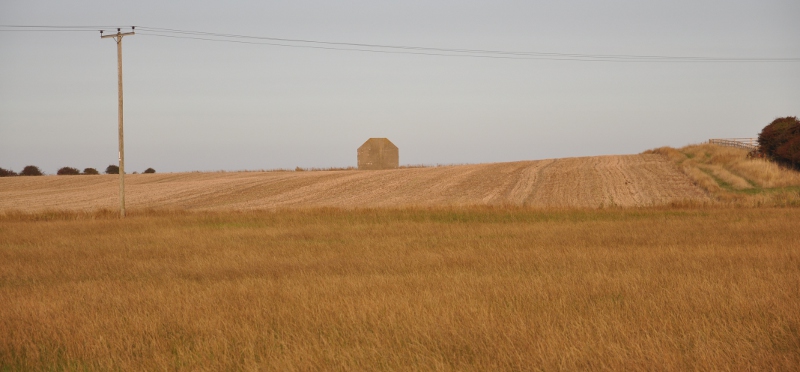Martin Fuge shows how he photographed the Kilnsea sound mirror. His other landscape photography videos are worth watching as well.
Kilnsea
Kilnsea sound mirror in the Hull Daily Mail
6) Kilnsea Sound Mirror: Fears of attacks on Hull during the First World War led to the construction of this concrete “sound mirror”. The dish, a precursor of radar, would focus the sounds of distant engines to a listener. It is said they could identify surface vessels or aircraft up to 25 miles away.
10 TOP secret places in Hull and East Yorkshire. Hull Daily Mail, 28 February 2015.
BBC on Spurn
The Kilnsea sound mirror got a mention on the BBC website:
… One legacy of the raids is the sound mirror, which still stands in a field just outside the village.
The large concave concrete dish acted as a primitive radar, amplifying engine sounds from distant Zeppelins so they could be heard by an operator, who would then send an air-raid warning inland by radio.
Source: World War One: Spurn Point’s military relics at sea’s mercy, 28 February 2014
(note that despite what the article says, the Spurn railway was standard gauge)
SKEALS on the sound mirror
The Kilnsea sound mirror, described as “the only listed ‘building’ in Kilnsea“, is mentioned on The Spurn, Kilnsea and Easington Area Local Studies Group website.
Cycling to a sound mirror
German cyclist Roland Schmellenkamp has been to see the Kilnsea sound mirror in East Yorkshire as part of a trip from Glasgow to Offenburg. He comments that Britons “often have surprisingly good knowledge of history”.
Interesting mirror at Interesting Times
Sound effects is a 20 August 2010 posting about the Kilnsea sound mirror at Mike Higginbottom’s Interesting Times website.
Among the First World War fortifications that protected eastern England from the German threat is a curious lump of concrete in a field north-west of the Godwin Battery on the coast at Kilnsea on the way to Spurn Point. This enigmatic piece of concrete is an acoustic mirror …
Kilnsea sound mirror pictures at From The Neolithic To The Sea
Kilnsea Sound Mirror at From The Neolithic To The Sea.
This is a personal journey through time and space, visiting many places and the story told in pictures and words. As with most journeys, we encounter the ordinary, the unusual and the interesting. Some we seek, some we find and some even find us.
From The Neolithic To The Sea: A Journey From The Past To The Present
Other pages of interest on the site include the Humber Port War Signal Station at Spurn, Reighton Sands and the Godwin Artillery Battery at Kilnsea.
‘Hidden things to see and do’ from the Observer
The sound mirrors – and this website – got a mention in the Observer’s travel section on 5 April 2009. The piece formed part of the Military sites” category in a series about Secret Britain – “All around us lie overgrown and forgotten sites with fascinating stories to tell, says Iain Sinclair”.
Acoustic mirrors, various locations
In the middle of a field in Kilnsea, Yorkshire there is a 15-foot-high concave concrete structure resembling a satellite dish. It’s actually an acoustic (or sound) mirror, used during the first world war to detect enemy engine sounds. They are a common fixture along the British coast, including at Kilnsea (OS map ref: TA 411167), Hythe in Kent (OS map ref: TR138344) and Denge on the Dungeness peninsula (OS map ref: TR070215), which recently featured in the new Prodigy music video, Invaders Must Die.
Source Observer
Holderness defences

The August 2006 issue of East Yorkshire local magazine The West In View looked at military defences in Holderness, including the Kilnsea sound mirror, and used some of my photos of the Cherry Cob Sands bombing decoy.
You can download a PDF of the magazine.
Sites of Special Sonic Interest
Scott Hawkins has been documenting, cataloging and performing at Sites of Special Sonic Interest across the UK. I classify a performance as any kind of physical interaction resulting in an audible product. Here, looking into the eye of the Sound Mirror at Kilnsea on Spurn Head, the wind (persistent ghostly presence) combined to produce and aerophonic ambient extravaganza.
